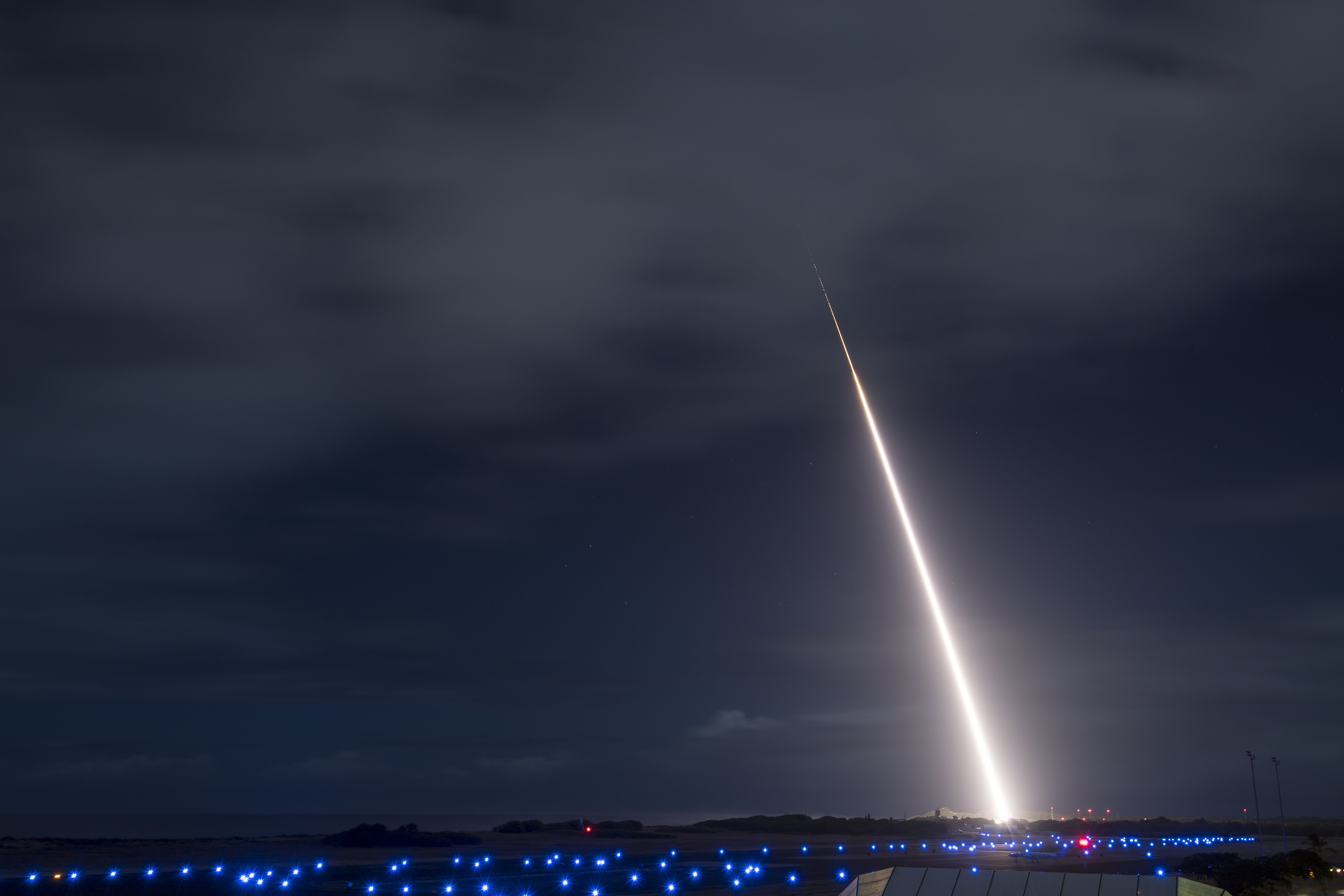
This post has been updated to clarify comments from Gen. Glen VanHerck in Wednesday’s hearing.
The head of the Missile Defense Agency warned the House that a continuing resolution will leave gaps in testing and work on test ranges will “come to an all-stop” until the president signs a new budget into law, MDA director Vice Adm. Jon Hill said on Tuesday.
A continuing resolution, with its limits of how much can be spent, “always will have an effect on costs and production” of everything from sensors to interceptors needed by his agency, as well as test and evaluation, Hill said before the House Armed Services strategic forces subcommittee. The budget is requesting $8.9 billion for missile defense in Fiscal Year 2022, down from $10 billion in FY 2021.
“The risk is we fall further behind” in providing for homeland defense, Air Force Gen. Glen VanHerck, Northern Command’s top officer, said at the hearing. In his opening statement, he listed his unfunded requirements for an over-the-horizon radar to better detect threat missiles, global all-domain sensors, and improved communications in the Arctic to meet the mission of defending against air and missile attacks from China, Russia and North Korea.
Later, VanHerck spelled out the increased threat from Russian cruise missiles “that are difficult to detect”. In the “not too distant future, China will be in that position.” He added the modernized quiet Russian guided-missile submarines to his assessment of “a persistent proximate threat” to the homeland and predicted China would have this capability in 10 years.
Among the cuts to missile defense were all funds toward directed energy, as the Pentagon moved to consolidate this work, Hill said. When asked if he knew where directed energy money might go in the new year, he said, “I don’t have a good look into the funding.”
Hill said when it came to operating missile defense systems and command and control in a contested electronic warfare environment, “we’re walking fast now” and are about to run. “I want to know where the vulnerabilities are” in air and missile defense.
Looking at what the agency has learned from tests of American hypersonic weapons, Hill said right now “we’re focused on Aegis” as providing the necessary warning. “What’s missing is the [glide phase] interceptor.”
Last week before the Senate Armed Services Committee, the admiral said Aegis “is the first regional hypersonic missile defense capability that is deployed with the aircraft carrier strike groups today.” He also was referring to the Hypersonic and Ballistic Tracking Space Sensor [HBTSS] that provides targeting information and the Standard Missile 6 missile. “And it’s important that we have that capability now because the hypersonic threat is there now. What we want to do is move further back into that trajectory, engage earlier, make the terminal defense even better. And so, the glide phase interceptor is under acceleration in the [Fiscal Year 2022] budget.”
The MDA asked for $248 million in the FY 2022 budget to develop defenses against hypersonic weapons, with the bulk of the funds going toward GPI development, Michelle Atkinson, MDA’s director of operations, told reporters during the late May budget rollout.
Hill repeated to the House panel, “the threat is now.” He added that HBTSS, “is a critical part of hypersonic defense.”
When asked about defending Guam from a possible Chinese or North Korean missile attack, he said the agency is ensuring the defense takes into account ballistic, cruise and hypersonic weapons in its assessment. “It’s a very aggressive timeline” to protect the U.S. territory from attack. The budget is requesting $118.3 million for this effort in the coming fiscal year.
Earlier this year, Adm. Phil Davidson, former head of U.S. Indo-Pacific Command, said putting an Aegis Ashore facility on Guam would free three destroyers for other missions in the Indo-Pacific.





